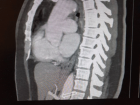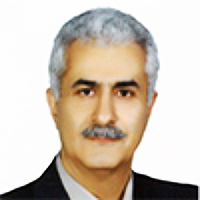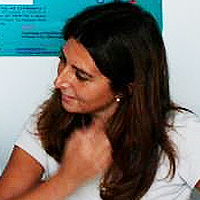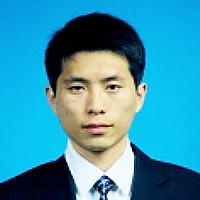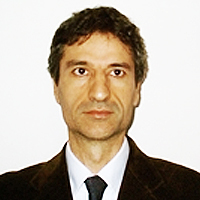Abstract
Research Article
Immunological background for treatments with biologicals in CRSwNP
L Klimek*, J Hagemann, I Casper, T Huppertz, A Bedbrook and J Bousquet
Published: 08 April, 2021 | Volume 5 - Issue 1 | Pages: 022-029
Background: Chronic rhinosinusitis (CRS) is a heterogeneous and multifactorial inflammatory disease of the nasal and paranasal mucosa. To date, no internationally standardized uniform classification has been developed for this disease.
Usually, a phenotype classification according to CRS with (CRSwNP) and without (CRSsNP) polyposis is performed. However, through a variety of studies, it has been shown that even within these phenotypes, different endotypes of CRS exist, each with a different underlying inflammatory pathophysiology. In this mini-review, we aim to outline the essential immunological processes in CRSwNP and to highlight the modern therapeutic options with biologics derived from this disease.
Methods: Current knowledge on the immunological and molecular processes of CRS, especially CRSwNP, was compiled by means of a structured literature review. Medline, PubMed, national/international trial and guideline registries as well as the Cochrane Library were all searched.
Results: Based on the current literature, the different immunological processes involved in CRS and nasal polyps were elaborated. Current studies on the therapy of eosinophilic diseases such as asthma and polyposis are presented and their results discussed.
Conclusion: Understanding the immunological basis of CRSwNP may help to develop new personalized therapeutic approaches using biologics. Currently, 2 biologics (dupilumab, omalizumab) have been approved for the therapy of CRSwNP (polyposis nasi) in Europe.
Read Full Article HTML DOI: 10.29328/journal.aaai.1001026 Cite this Article Read Full Article PDF
References
- Fokkens WJ, Lund VJ, Mullol J, Bachert C, Alobid I, et al. European Position Paper on Rhinosinusitis and Nasal Polyps 2012. Rhinology Supplement. Rhinology. 2012; 50: 1-12. PubMed: https://pubmed.ncbi.nlm.nih.gov/22469599/
- Hastan D, Fokkens WJ, Bachert C, Newson RB, Bislimovska J, et al. Chronic rhinosinusitis in Europe--an underestimated disease. A GA(2)LEN study. Allergy. 2011; 66: 1216-1223. PubMed: https://pubmed.ncbi.nlm.nih.gov/21605125/
- Stuck BA, Beule A, Jobst D, Klimek L, Laudien M, et al. [Guideline for "rhinosinusitis"-long version : S2k guideline of the German College of General Practitioners and Family Physicians and the German Society for Oto-Rhino-Laryngology, Head and Neck Surgery]. HNO. 2018; 66: 38-74. PubMed: https://pubmed.ncbi.nlm.nih.gov/28861645/
- Rosenfeld RM, David A, Neil B, Dickson C, Steven E, et al. Clinical practice guideline on adult sinusitis. Otolaryngol Head Neck Surg. 2007; 137: 365-377. PubMed: https://pubmed.ncbi.nlm.nih.gov/17761281/
- Koennecke M, Klimek L, Mullol J, Gevaert P, Wollenberg B. Subtyping of polyposis nasi: phenotypes, endotypes and comorbidities. Allergo J Int. 2018; 27: 56-65. PubMed: https://pubmed.ncbi.nlm.nih.gov/29564208/
- Calus L, Van Zele T, Derycke L, Krysko O, Dutre T, et al. Local inflammation in chronic upper airway disease. Curr Pharm Des. 2012; 18: 2336-2346. PubMed: https://pubmed.ncbi.nlm.nih.gov/22390697/
- Annunziato F, Romagnani S. Heterogeneity of human effector CD4+ T cells. Arthritis Res Ther. 2009; 11: 257. PubMed: https://pubmed.ncbi.nlm.nih.gov/20053303/
- Zygmunt B, Veldhoen M. T helper cell differentiation more than just cytokines. Adv Immunol. 2011; 109: 159-196. PubMed: https://pubmed.ncbi.nlm.nih.gov/21569915/
- Kaur D, Brightling C. OX40/OX40 ligand interactions in T-cell regulation and asthma. Chest. 2012; 141: 494-499. PubMed: https://pubmed.ncbi.nlm.nih.gov/22315115/
- Lane P. Role of OX40 signals in coordinating CD4 T cell selection, migration, and cytokine differentiation in T helper (Th)1 and Th2 cells. J Exp Med. 2000; 191: 201-206. PubMed: https://pubmed.ncbi.nlm.nih.gov/10637265/
- Plager DA, Kahl JC, Asmann YW, Nilson AE, Pallanch JF, et al. Gene transcription changes in asthmatic chronic rhinosinusitis with nasal polyps and comparison to those in atopic dermatitis. PLoS One. 2010; 5: e11450. PubMed: https://pubmed.ncbi.nlm.nih.gov/20625511/
- Van Zele T, Claeys S, Gevaert P, Van Maele G, Holtappels G, et al. Differentiation of chronic sinus diseases by measurement of inflammatory mediators. Allergy. 2006; 61: 1280-1289. PubMed: https://pubmed.ncbi.nlm.nih.gov/17002703/
- Kopf M, Le Gros G, Bachmann M, Lamers MC, Bluethmann H, et al. Disruption of the murine IL-4 gene blocks Th2 cytokine responses. Nature. 1993; 362: 245-248. PubMed: https://pubmed.ncbi.nlm.nih.gov/8384701/
- Ouyang W, Ranganath SH, Weindel K, Bhattacharya D, Murphy TL, et al. Inhibition of Th1 development mediated by GATA-3 through an IL-4-independent mechanism. Immunity. 1998; 9: 745-755. PubMed: https://pubmed.ncbi.nlm.nih.gov/9846495/
- Derycke L, Eyerich S, Van Crombruggen K, Perez-Novo C, Holtappels G, et al. Mixed T helper cell signatures in chronic rhinosinusitis with and without polyps. PloS One. 2014; 9: e97581. PubMed: https://pubmed.ncbi.nlm.nih.gov/24911279/
- Danielsen A, Tynning T, Brokstad KA, Olofsson J, Davidsson A. Interleukin 5, IL6, IL12, IFN-gamma, RANTES and Fractalkine in human nasal polyps, turbinate mucosa and serum. Eur Arch Otorhinolaryngol. 2006; 263: 282-289. PubMed: https://pubmed.ncbi.nlm.nih.gov/16456693/
- Li Z, Zhang Y, Sun B. Current understanding of Th2 cell differentiation and function. Protein Cell. 2011; 2: 604-611. PubMed: https://pubmed.ncbi.nlm.nih.gov/21904976/
- Prussin C, Yin Y, Upadhyaya B. T(H)2 heterogeneity: Does function follow form? J Allergy Clin Immunol. 2010; 126: 1094-1098. PubMed: https://pubmed.ncbi.nlm.nih.gov/20951419/
- Bachert C, Wagenmann M, Hauser U, Rudack C. IL-5 synthesis is upregulated in human nasal polyp tissue. J Allergy Clin Immunol. 1997; 99: 837-842. PubMed: https://pubmed.ncbi.nlm.nih.gov/9215253/
- Bachert C, Gevaert P, Holtappels G, Cuvelier C, van Cauwenberge P. Nasal polyposis: from cytokines to growth. Am J Rhinol. 2000; 14: 279-290. PubMed: https://pubmed.ncbi.nlm.nih.gov/11068652/
- Hurst SM, Wilkinson TS, McLoughlin RM, Jones S, Horiuchi S, et al. Il-6 and its soluble receptor orchestrate a temporal switch in the pattern of leukocyte recruitment seen during acute inflammation. Immunity. 2001; 14: 705-714. PubMed: https://pubmed.ncbi.nlm.nih.gov/11420041/
- Jones SA. Directing transition from innate to acquired immunity: defining a role for IL-6. J Immunol. 2005; 175: 3463-3468. PubMed: https://pubmed.ncbi.nlm.nih.gov/16148087/
- Kaplanski G, Marin V, Montero-Julian F, Mantovani A, Farnarier C. IL-6: a regulator of the transition from neutrophil to monocyte recruitment during inflammation. Trends Immunol. 2003; 24: 25-29. PubMed: https://pubmed.ncbi.nlm.nih.gov/12495721/
- Peters AT, Kato A, Zhang N, Conley DB, Suh L, et al. Evidence for altered activity of the IL-6 pathway in chronic rhinosinusitis with nasal polyps. J Allergy Clin Immunol. 2010; 125: 397-403 e10. PubMed: https://pubmed.ncbi.nlm.nih.gov/20159251/
- Tomassen P, Vandeplas G, Van Zele T, Cardell LO, Arebro J, et al. Inflammatory endotypes of chronic rhinosinusitis based on cluster analysis of biomarkers. J Allergy Clin Immunol. 2016; 137: 1449-1456 e4. PubMed: https://pubmed.ncbi.nlm.nih.gov/26949058/
- Keswani A, Chustz RT, Suh L, Carter R, Peters AT, et al. Differential expression of interleukin-32 in chronic rhinosinusitis with and without nasal polyps. Allergy. 2012; 67: 25-32. PubMed: https://pubmed.ncbi.nlm.nih.gov/21899560/
- Cho JS, Kim JA, Park JH, Park IH, Han IH, et al. Toll-like receptor 4-mediated expression of interleukin-32 via the c-Jun N-terminal kinase/protein kinase B/cyclic adenosine monophosphate response element binding protein pathway in chronic rhinosinusitis with nasal polyps. Int Forum Allergy Rhinol. 2016; 6: 1020-1028. PubMed: https://pubmed.ncbi.nlm.nih.gov/27173130/
- Bai X, Kim SH, Azam T, McGibney MT, Huang H, et al. IL-32 is a host protective cytokine against Mycobacterium tuberculosis in differentiated THP-1 human macrophages. J Immunol. 2010; 184: 3830-3840. PubMed: https://pubmed.ncbi.nlm.nih.gov/20190143/
- Dinarello CA, Kim SH. IL-32, a novel cytokine with a possible role in disease. Ann Rheum Dis. 2006; 65 Suppl 3: iii61-64. PubMed: https://pubmed.ncbi.nlm.nih.gov/17038476/
- Kim SH, Han SY, Azam T, Yoon DY, Dinarello CA. Interleukin-32: a cytokine and inducer of TNFalpha. Immunity. 2005; 22: 131-142. PubMed: https://pubmed.ncbi.nlm.nih.gov/15664165/
- Li W, Sun W, Liu L, Yang F, Li Y, et al. IL-32: a host proinflammatory factor against influenza viral replication is upregulated by aberrant epigenetic modifications during influenza A virus infection. J Immunol. 2010; 185: 5056-5065. PubMed: https://pubmed.ncbi.nlm.nih.gov/20889550/
- Netea MG, Azam T, Lewis EC, Joosten LA, Wang M, et al. Mycobacterium tuberculosis induces interleukin-32 production through a caspase- 1/IL-18/interferon-gamma-dependent mechanism. PLoS Med. 2006; 3: e277. PubMed: https://pubmed.ncbi.nlm.nih.gov/16903774/
- Nold MF, Nold-Petry CA, Pott GB, Zepp JA, Saavedra MT, et al. Endogenous IL-32 controls cytokine and HIV-1 production. J Immunol. 2008; 181: 557-565. PubMed: https://pubmed.ncbi.nlm.nih.gov/18566422/
- Calabrese F, Baraldo S, Bazzan E, Lunardi F, Rea F, et al. IL-32, a novel proinflammatory cytokine in chronic obstructive pulmonary disease. Am J Respir Crit Care Med. 2008; 178: 894-901. PubMed: https://pubmed.ncbi.nlm.nih.gov/18703789/
- Meyer N, Zimmermann M, Burgler S, Bassin C, Woehrl S, et al. IL-32 is expressed by human primary keratinocytes and modulates keratinocyte apoptosis in atopic dermatitis. J Allergy Clin Immunol. 2010; 125: 858-865. PubMed: https://pubmed.ncbi.nlm.nih.gov/20227751/
- Kang JW, Park YS, Lee DH, Kim MS, Bak Y, et al. Interaction network mapping among IL-32 isoforms. Biochimie. 2014; 101: 248-251. PubMed: https://pubmed.ncbi.nlm.nih.gov/24472437/
- Chin D, Harvey RJ. Nasal polyposis: an inflammatory condition requiring effective anti-inflammatory treatment. Curr Opin Otolaryngol Head Neck Surg. 2013; 21: 23-30. PubMed: https://pubmed.ncbi.nlm.nih.gov/23172039/
- Lam EP, Kariyawasam HH, Rana BM, Durham SR, McKenzie AN, et al. IL-25/IL-33-responsive TH2 cells characterize nasal polyps with a default TH17 signature in nasal mucosa. J Allergy Clin Immunol. 2016; 137: 1514-1524. PubMed: https://pubmed.ncbi.nlm.nih.gov/26684290/
- Kato A. Immunopathology of chronic rhinosinusitis. Allergol Int. 2015; 64: 121-130. PubMed: https://pubmed.ncbi.nlm.nih.gov/25838086/
- Wang YH, Angkasekwinai P, Lu N, Voo KS, Arima K, et al. IL-25 augments type 2 immune responses by enhancing the expansion and functions of TSLP-DC-activated Th2 memory cells. J Exp Med. 2007; 204: 1837-1847. PubMed: https://pubmed.ncbi.nlm.nih.gov/17635955/
- Shin HW, Kim DK, Park MH, Eun KM, Lee M, et al. IL-25 as a novel therapeutic target in nasal polyps of patients with chronic rhinosinusitis. J Allergy Clin Immunol. 2015; 135: 1476-1485. PubMed: https://pubmed.ncbi.nlm.nih.gov/25725991/
- Kimura S, Pawankar R, Mori S, Nonaka M, Masuno S, et al. Increased expression and role of thymic stromal lymphopoietin in nasal polyposis. Allergy Asthma Immunol Res. 2011; 3: 186-193. PubMed: https://pubmed.ncbi.nlm.nih.gov/21738884/
- Liu T, Li TL, Zhao F, Xie C, Liu AM, et al. Role of thymic stromal lymphopoietin in the pathogenesis of nasal polyposis. Am J Med Sci. 2011; 341: 40-47. PubMed: https://pubmed.ncbi.nlm.nih.gov/20924287/
- Nagarkar DR, Poposki JA, Tan BK, Comeau MR, Peters AT, et al. Thymic stromal lymphopoietin activity is increased in nasal polyps of patients with chronic rhinosinusitis. J Allergy Clin Immunol. 2013; 132: 593-600. PubMed: https://pubmed.ncbi.nlm.nih.gov/23688414/
- Nagarkar DR, Poposki JA, Comeau MR, Biyasheva A, Avila PC, et al. Airway epithelial cells activate TH2 cytokine production in mast cells through IL-1 and thymic stromal lymphopoietin. J Allergy Clin Immunol. 2012; 130: 225-232. PubMed: https://pubmed.ncbi.nlm.nih.gov/22633328/
- Reh DD, Wang Y, Ramanathan M, Lane AP. Treatment-recalcitrant chronic rhinosinusitis with polyps is associated with altered epithelial cell expression of interleukin-33. Am J Rhinol Allergy. 2010; 24: 105-109. PubMed: https://pubmed.ncbi.nlm.nih.gov/20338108/
- Kim DK, Jin HR, Eun KM, Mo JH, Cho SH, et al. The role of interleukin-33 in chronic rhinosinusitis. Thorax. 2017; 72: 591-593. PubMed: https://pubmed.ncbi.nlm.nih.gov/28242750/
- Arend WP, Palmer G, Gabay C. IL-1, IL-18, and IL-33 families of cytokines. Immunol Rev. 2008; 223: 20-38. PubMed: https://pubmed.ncbi.nlm.nih.gov/18613828/
- Cherry WB, Yoon J, Bartemes KR, Iijima K, Kita H. A novel IL-1 family cytokine, IL-33, potently activates human eosinophils. J Allergy Clin Immunol. 2008; 121: 1484-1490. PubMed: https://pubmed.ncbi.nlm.nih.gov/18539196/
- Castano R, Bosse Y, Endam LM, Desrosiers M. Evidence of association of interleukin-1 receptor-like 1 gene polymorphisms with chronic rhinosinusitis. Am J Rhinol Allergy. 2009; 23: 377-384. PubMed: https://pubmed.ncbi.nlm.nih.gov/19671251/
- Mjosberg JM, Trifari S, Crellin NK, Peters CP, van Drunen CM, et al. Human IL-25- and IL-33-responsive type 2 innate lymphoid cells are defined by expression of CRTH2 and CD161. Nat Immunol. 2011; 12: 1055-1062. PubMed: https://pubmed.ncbi.nlm.nih.gov/21909091/
- Robinette ML, Colonna M. Immune modules shared by innate lymphoid cells and T cells. J Allergy Clin Immunol. 2016; 138: 1243-1251. PubMed: https://pubmed.ncbi.nlm.nih.gov/27817796/
- Kim HY, Chang YJ, Subramanian S, Lee HH, Albacker LA, et al. Innate lymphoid cells responding to IL-33 mediate airway hyperreactivity independently of adaptive immunity. J Allergy Clin Immunol. 2012; 129: 216-227. PubMed: https://pubmed.ncbi.nlm.nih.gov/22119406/
- Morita H, Moro K, Koyasu S. Innate lymphoid cells in allergic and nonallergic inflammation. J Allergy Clin Immunol. 2016; 138: 1253-1264. PubMed: https://pubmed.ncbi.nlm.nih.gov/27817797/
- Ho J, Bailey M, Zaunders J, Mrad N, Sacks R, et al. Cellular comparison of sinus mucosa vs polyp tissue from a single sinus cavity in chronic rhinosinusitis. Int Forum Allergy Rhinol. 2015; 5: 14-27. PubMed: https://pubmed.ncbi.nlm.nih.gov/25332132/
- Ho J, Bailey M, Zaunders J, Mrad N, Sacks R, et al. Group 2 innate lymphoid cells (ILC2s) are increased in chronic rhinosinusitis with nasal polyps or eosinophilia. Clin Exp Allergy. 2015; 45: 394-403. PubMed: https://pubmed.ncbi.nlm.nih.gov/25429730/
- Beck LA, Stellato C, Beall LD, Schall TJ, Leopold D, et al. Detection of the chemokine RANTES and endothelial adhesion molecules in nasal polyps. J Allergy Clin Immunol. 1996; 98: 766-780. PubMed: https://pubmed.ncbi.nlm.nih.gov/8876553/
- Davidsson A, Danielsen A, Viale G, Olofsson J, Dell'Orto P, et al. Positive identification in situ of mRNA expression of IL-6, and IL-12, and the chemotactic cytokine RANTES in patients with chronic sinusitis and polypoid disease. Clinical relevance and relation to allergy. Acta Otolaryngol. 1996; 116: 604-610. PubMed: https://pubmed.ncbi.nlm.nih.gov/8831850/
- Allen JS, Eisma R, LaFreniere D, Leonard G, Kreutzer D. Characterization of the eosinophil chemokine RANTES in nasal polyps. The Annals of otology, rhinology, and laryngology. 1998; 107: 416-420. PubMed: https://pubmed.ncbi.nlm.nih.gov/9596221/
- Meyer JE, Bartels J, Gorogh T, Sticherling M, Rudack C, et al. The role of RANTES in nasal polyposis. Am J Rhinol. 2005; 19: 15-20. PubMed: https://pubmed.ncbi.nlm.nih.gov/15794069/
- Chen YS, Arab SF, Westhofen M, Lorenzen J. Expression of interleukin-5, interleukin-8, and interleukin-10 mRNA in the osteomeatal complex in nasal polyposis. Am J Rhinol. 2005; 19: 117-123. PubMed: https://pubmed.ncbi.nlm.nih.gov/15921209/
- Kostamo K, Sorsa T, Leino M, Tervahartiala T, Alenius H, et al. In vivo relationship between collagenase-2 and interleukin-8 but not tumour necrosis factor-alpha in chronic rhinosinusitis with nasal polyposis. Allergy. 2005; 60: 1275-1279. PubMed: https://pubmed.ncbi.nlm.nih.gov/16134994/
- Scavuzzo MC, Fattori B, Ruffoli R, Rocchi V, Carpi A, et al. Inflammatory mediators and eosinophilia in atopic and non-atopic patients with nasal polyposis. Biomed Pharmacother. 2005; 59: 323-329. PubMed: https://pubmed.ncbi.nlm.nih.gov/15935609/
- Wang X, Zhang N, Bo M, Holtappels G, Zheng M, et al. Diversity of TH cytokine profiles in patients with chronic rhinosinusitis: A multicenter study in Europe, Asia, and Oceania. J Allergy Clin Immunol. 2016; 138: 1344-1353. PubMed: https://pubmed.ncbi.nlm.nih.gov/27544740/
- Poposki JA, Uzzaman A, Nagarkar DR, Chustz RT, Peters AT, et al. Increased expression of the chemokine CCL23 in eosinophilic chronic rhinosinusitis with nasal polyps. J Allergy Clin Immunol. 2011; 128: 73-81. PubMed: https://pubmed.ncbi.nlm.nih.gov/21497884/
- Bachert C, Van Cauwenberge PB. Inflammatory mechanisms in chronic sinusitis. Acta Otorhinolaryngol Belg. 1997; 51: 209-217. PubMed: https://pubmed.ncbi.nlm.nih.gov/9444369/
- Fundova P, Funda DP, Kovar D, Holy R, Navara M, Tlaskalova-Hogenova H. Increased expression of chemokine receptors CCR1 and CCR3 in nasal polyps: molecular basis for recruitment of the granulocyte infiltrate. Folia Microbiol (Praha). 2013; 58: 219-224. PubMed : https://pubmed.ncbi.nlm.nih.gov/23054685/
- Patel VP, Kreider BL, Li Y, Li H, Leung K, et al. Molecular and functional characterization of two novel human C-C chemokines as inhibitors of two distinct classes of myeloid progenitors. J Exp Med. 1997; 185: 1163-1172. PubMed: https://pubmed.ncbi.nlm.nih.gov/9104803/
- Novak H, Muller A, Harrer N, Gunther C, Carballido JM, et al. CCL23 expression is induced by IL-4 in a STAT6-dependent fashion. J Immunol. 2007; 178: 4335-4341. PubMed: https://pubmed.ncbi.nlm.nih.gov/17371990/
- Peterson S, Poposki JA, Nagarkar DR, Chustz RT, Peters AT, et al. Increased expression of CC chemokine ligand 18 in patients with chronic rhinosinusitis with nasal polyps. J Allergy Clin Immunol. 2012; 129: 119-127. PubMed: https://pubmed.ncbi.nlm.nih.gov/21943944/
- Islam SA, Ling MF, Leung J, Shreffler WG, Luster AD. Identification of human CCR8 as a CCL18 receptor. J Exp Med. 2013; 210: 1889-1898. PubMed: https://pubmed.ncbi.nlm.nih.gov/23999500/
- Kato A, Peters A, Suh L, Carter R, Harris KE, et al. Evidence of a role for B cell-activating factor of the TNF family in the pathogenesis of chronic rhinosinusitis with nasal polyps. J Allergy Clin Immunol. 2008; 121: 1385-1392. PubMed: https://pubmed.ncbi.nlm.nih.gov/18410958/
- Polzehl D, Moeller P, Riechelmann H, Perner S. Distinct features of chronic rhinosinusitis with and without nasal polyps. Allergy. 2006; 61: 1275-1279. PubMed : https://pubmed.ncbi.nlm.nih.gov/17002702/
- Patadia M, Dixon J, Conley D, Chandra R, Peters A, et al. Evaluation of the presence of B-cell attractant chemokines in chronic rhinosinusitis. Am J Rhinol Allergy. 2010; 24: 11-16. PubMed: https://pubmed.ncbi.nlm.nih.gov/20109310/
- Gauvreau GM, O'Byrne PM, Boulet LP, Wang Y, Cockcroft D, et al. Effects of an anti-TSLP antibody on allergen-induced asthmatic responses. N Engl J Med. 2014; 370: 2102-2110. PubMed: https://pubmed.ncbi.nlm.nih.gov/24846652/
- Bel EH, Ortega HG, Pavord ID. Glucocorticoids and mepolizumab in eosinophilic asthma. N Engl J Med. 2014; 371: 2434-2444. PubMed: https://pubmed.ncbi.nlm.nih.gov/25517713/
- Wenzel S, Ford L, Pearlman D, Spector S, Sher L, et al. Dupilumab in persistent asthma with elevated eosinophil levels. N Engl J Med. 2013; 368: 2455-2466. PubMed: https://pubmed.ncbi.nlm.nih.gov/23688323/
- Pauwels B, Jonstam K, Bachert C. Emerging biologics for the treatment of chronic rhinosinusitis. Expert Rev Clin Immunol. 2015; 11: 349-361. PubMed: https://pubmed.ncbi.nlm.nih.gov/25651905/
- Busse W, Corren J, Lanier BQ, McAlary M, Fowler-Taylor A, et al. Omalizumab, anti-IgE recombinant humanized monoclonal antibody, for the treatment of severe allergic asthma. J Allergy Clin Immunol. 2001; 108: 184-190. PubMed: https://pubmed.ncbi.nlm.nih.gov/11496232/
- Bachert C, Zhang L, Gevaert P. Current and future treatment options for adult chronic rhinosinusitis: Focus on nasal polyposis. J Allergy Clin Immunol. 2015; 136: 1431-1440. PubMed: https://pubmed.ncbi.nlm.nih.gov/26654192/
- Bachert C, Zhang N, Holtappels G, De Lobel L, van Cauwenberge P, et al. Presence of IL-5 protein and IgE antibodies to staphylococcal enterotoxins in nasal polyps is associated with comorbid asthma. J Allergy Clin Immunol. 2010; 126: 962-968. PubMed: https://pubmed.ncbi.nlm.nih.gov/20810157/
- Lehrer E, Mullol J, Agredo F, Alobid I. Management of chronic rhinosinusitis in asthma patients: is there still a debate? Curr Allergy Asthma Rep. 2014; 14: 440. PubMed: https://pubmed.ncbi.nlm.nih.gov/24682772/
- Van Zele T, Holtappels G, Gevaert P, Bachert C. Differences in initial immunoprofiles between recurrent and nonrecurrent chronic rhinosinusitis with nasal polyps. Am J Rhinol Allergy. 2014; 28: 192-198. PubMed: https://pubmed.ncbi.nlm.nih.gov/24980230/
- Grundmann SA, Hemfort PB, Luger TA, Brehler R. Anti-IgE (omalizumab): a new therapeutic approach for chronic rhinosinusitis. J Allergy Clin Immunol. 2008; 121: 257-258. PubMed: https://pubmed.ncbi.nlm.nih.gov/18206513/
- Holgate ST, Djukanovic R, Casale T, Bousquet J. Anti-immunoglobulin E treatment with omalizumab in allergic diseases: an update on anti-inflammatory activity and clinical efficacy. Clinical and experimental allergy: J British Soc Allergy Clin Immunol. 2005; 35: 408-416. PubMed: https://pubmed.ncbi.nlm.nih.gov/15836747/
- Pinto JM, Mehta N, DiTineo M, Wang J, Baroody FM, et al. A randomized, double-blind, placebo-controlled trial of anti-IgE for chronic rhinosinusitis. Rhinology. 2010; 48: 318-324. PubMed: https://pubmed.ncbi.nlm.nih.gov/21038023/
- Vennera MDC, Sabadell C, Picado C, Spanish Omalizumab R. Duration of the efficacy of omalizumab after treatment discontinuation in 'real life' severe asthma. Thorax. 2018. 73: 782-784. PubMed: https://pubmed.ncbi.nlm.nih.gov/29079610/
- Gevaert P, Calus L, Van Zele T, Blomme K, De Ruyck N, et al. Omalizumab is effective in allergic and nonallergic patients with nasal polyps and asthma. J Allergy Clin Immunol. 2013; 131: 110-116. PubMed: https://pubmed.ncbi.nlm.nih.gov/23021878/
- Felix-Redondo FJ, Fernandez-Berges D, Calderon A, Consuegra-Sanchez L, Lozano L, et al. Prevalence of left-ventricular hypertrophy by multiple electrocardiographic criteria in general population: Hermex study. J Hypertens. 2012; 30: 1460-1467. PubMed: https://pubmed.ncbi.nlm.nih.gov/22573128/
- Calderon MA, Cox L, Casale TB, Moingeon P, Demoly P. Multiple-allergen and single-allergen immunotherapy strategies in polysensitized patients: looking at the published evidence. J Allergy Clin Immunol. 2012; 129: 929-934. PubMed: https://pubmed.ncbi.nlm.nih.gov/22244595/
- Valenta R, Laffer S, Vrtala S, Gronlund H, Elfman L, et al. Recombinant allergens. Steps on the way to diagnosis and therapy of type I allergy. Adv Exp Med Biol. 1996; 409: 185-196. PubMed: https://pubmed.ncbi.nlm.nih.gov/9095240/
- Gauvreau GM, Arm JP, Boulet LP, Leigh R, Cockcroft DW, et al. Efficacy and safety of multiple doses of QGE031 (ligelizumab) versus omalizumab and placebo in inhibiting allergen-induced early asthmatic responses. J Allergy Clin Immunol. 2016; 138: 1051-1059. PubMed: https://pubmed.ncbi.nlm.nih.gov/27185571/
- Arm JP, Bottoli I, Skerjanec A, Floch D, Groenewegen A, et al. Pharmacokinetics, pharmacodynamics and safety of QGE031 (ligelizumab), a novel high-affinity anti-IgE antibody, in atopic subjects. Clinical and experimental allergy. J British Soc Allergy Clin Immunol. 2014; 44: 1371-1385. PubMed: https://pubmed.ncbi.nlm.nih.gov/25200415/
- Gauvreau GM, Harris JM, Boulet LP, Scheerens H, Fitzgerald JM, et al. Targeting membrane-expressed IgE B cell receptor with an antibody to the M1 prime epitope reduces IgE production. Sci Translational Med. 2014; 6: 243ra85. PubMed: https://pubmed.ncbi.nlm.nih.gov/24990880/
- Corrigan CJ, Kettner J, Doemer C, Cromwell O, Narkus A. Efficacy and safety of preseasonal-specific immunotherapy with an aluminium-adsorbed six-grass pollen allergoid. Allergy. 2005; 60: 801-807. PubMed: https://pubmed.ncbi.nlm.nih.gov/15876311/
- Flood-Page P, Swenson C, Faiferman I, Matthews J, Williams M, et al. A study to evaluate safety and efficacy of mepolizumab in patients with moderate persistent asthma. Am J Respira Crit Care Med. 2007; 176: 1062-1071. PubMed: https://pubmed.ncbi.nlm.nih.gov/17872493/
- Flood-Page PT, Menzies-Gow AN, Kay AB, Robinson DS. Eosinophil's role remains uncertain as anti-interleukin-5 only partially depletes numbers in asthmatic airway. Am J Respira Crit Care Med. 2003; 167: 199-204. PubMed: https://pubmed.ncbi.nlm.nih.gov/12406833/
- Bel EH, Wenzel SE, Thompson PJ, Prazma CM, Keene ON, et al. Oral glucocorticoid-sparing effect of mepolizumab in eosinophilic asthma. New Engl J Med. 2014; 371: 1189-1197. PubMed: https://pubmed.ncbi.nlm.nih.gov/25199060/
- Gevaert P, Lang-Loidolt D, Lackner A, Stammberger H, Staudinger H, et al. Nasal IL-5 levels determine the response to anti-IL-5 treatment in patients with nasal polyps. J Allergy Clin Immunol. 2006; 118: 1133-1141. PubMed: https://pubmed.ncbi.nlm.nih.gov/17088140/
- Gevaert P, Van Bruaene N, Cattaert T, Van Steen K, Van Zele T, et al. Mepolizumab, a humanized anti-IL-5 mAb, as a treatment option for severe nasal polyposis. J Allergy Clin Immunol. 2011; 128: 989-995. PubMed: https://pubmed.ncbi.nlm.nih.gov/21958585/
- Mepolizumab in Nasal Polyposis. https://clinicaltrials.gov/ct2/show/NCT01362244
- Effect of Mepolizumab in Severe Bilateral Nasal Polyps. https://clinicaltrials.gov/ct2/show/NCT03085797
- Castro M, Zangrilli J, Wechsler ME, Bateman ED, Brusselle GG, et al. Reslizumab for inadequately controlled asthma with elevated blood eosinophil counts: results from two multicentre, parallel, double-blind, randomised, placebo-controlled, phase 3 trials. Lancet Respir Med. 2015; 3: 355-366. PubMed: https://pubmed.ncbi.nlm.nih.gov/25736990/
- Castro M, Mathur S, Hargreave F, Boulet LP, Xie F, et al. Reslizumab for poorly controlled, eosinophilic asthma: a randomized, placebo-controlled study. Am J Respir Crit Care Med. 2011; 184: 1125-1132. PubMed: https://pubmed.ncbi.nlm.nih.gov/21852542/
- Study of Chronic Rhinosinusitis Symptoms in Asthma Patients Undergoing Treatment With Reslizumab. https://clinicaltrials.gov/ct2/show/NCT03369574
- Kolbeck R, Kozhich A, Koike M, Peng L, Andersson CK, et al. MEDI-563, a humanized anti-IL-5 receptor alpha mAb with enhanced antibody-dependent cell-mediated cytotoxicity function. J Allergy Clin Immunol. 2010; 125: 1344-1345. PubMed: https://pubmed.ncbi.nlm.nih.gov/20513525/
- Berair R, Pavord ID. Rationale and clinical results of inhibiting interleukin-5 for the treatment of severe asthma. Curr Allergy Asthma Rep. 2013; 13: 469-476. PubMed: https://pubmed.ncbi.nlm.nih.gov/23904099/
- Laviolette M, Gossage DL, Gauvreau G, Leigh R, Olivenstein R, et al. Effects of benralizumab on airway eosinophils in asthmatic patients with sputum eosinophilia. J Allergy Clin Immunol. 2013; 132: 1086-1096. PubMed: https://pubmed.ncbi.nlm.nih.gov/23866823/
- Mahdavinia M, Carter RG, Ocampo CJ, Stevens W, Kato A, et al. Basophils are elevated in nasal polyps of patients with chronic rhinosinusitis without aspirin sensitivity. J Allergy Clin Immunol. 2014; 133: 1759-1763. PubMed: https://pubmed.ncbi.nlm.nih.gov/24636088/
- Efficacy and Safety Study of Benralizumab for Patients With Severe Nasal Polyposis (OSTRO). https://clinicaltrials.gov/ct2/show/NCT03401229
- Corren J, Lemanske RF, Hanania NA, Korenblat PE, Parsey MV, et al. Lebrikizumab treatment in adults with asthma. New Engl J Med. 2011; 365: 1088-1098.
- De Boever EH, Ashman C, Cahn AP, Locantore NW, Overend P, et al. Efficacy and safety of an anti-IL-13 mAb in patients with severe asthma: a randomized trial. J Allergy Clin Immunol. 2014; 133: 989-996. PubMed: https://pubmed.ncbi.nlm.nih.gov/24582316/
- Noonan M, Korenblat P, Mosesova S, Scheerens H, Arron JR, et al. Dose-ranging study of lebrikizumab in asthmatic patients not receiving inhaled steroids. J Allergy Clin Immunol. 2013; 132: 567-574. PubMed: https://pubmed.ncbi.nlm.nih.gov/23726041/
- Oh CK, Geba GP, Molfino N. Investigational therapeutics targeting the IL-4/IL-13/STAT-6 pathway for the treatment of asthma. European respiratory review. J Eur Respir Soc. 2010; 19: 46-54. PubMed: https://pubmed.ncbi.nlm.nih.gov/20956165/
- Scheerens H, Arron JR, Zheng Y, Putnam WS, Erickson RW, et al. The effects of lebrikizumab in patients with mild asthma following whole lung allergen challenge. Clinical and experimental allergy. J British Soc Allergy Clin Immunol. 2014; 44: 38-46. PubMed: https://pubmed.ncbi.nlm.nih.gov/24131304/
- Novembre E, Galli E, Landi F, Caffarelli C, Pifferi M, et al. Coseasonal sublingual immunotherapy reduces the development of asthma in children with allergic rhinoconjunctivitis. J Allergy Clin Immunol. 2004; 114: 851-857. PubMed: https://pubmed.ncbi.nlm.nih.gov/15480326/
- Choy DF, Hart KM, Borthwick LA, Shikotra A, Nagarkar DR, et al. TH2 and TH17 inflammatory pathways are reciprocally regulated in asthma. Sci Translational Med. 2015; 7: 301ra129. PubMed: https://pubmed.ncbi.nlm.nih.gov/26290411/
- Corren J, Busse W, Meltzer EO, Mansfield L, Bensch G, et al. A randomized, controlled, phase 2 study of AMG 317, an IL-4Ralpha antagonist, in patients with asthma. Am J Respirat Criti Care Med. 2010; 181: 788-796. PubMed: https://pubmed.ncbi.nlm.nih.gov/20056900/
- Wenzel S, Wilbraham D, Fuller R, Getz EB, Longphre M. Effect of an interleukin-4 variant on late phase asthmatic response to allergen challenge in asthmatic patients: results of two phase 2a studies. Lancet. 2007; 370: 1422-1431. PubMed: https://pubmed.ncbi.nlm.nih.gov/17950857/
- Wenzel S, Castro M, Corren J, Maspero J, Wang L, et al. Dupilumab efficacy and safety in adults with uncontrolled persistent asthma despite use of medium-to-high-dose inhaled corticosteroids plus a long-acting beta2 agonist: a randomised double-blind placebo-controlled pivotal phase 2b dose-ranging trial. Lancet. 2016; 388: 31-44. PubMed: https://pubmed.ncbi.nlm.nih.gov/27130691/
- Wenzel SE, Wang L, Pirozzi G. Dupilumab in persistent asthma. New Engl J Med. 2013; 369: 1276. PubMed: https://pubmed.ncbi.nlm.nih.gov/24066755/
- Wechsler ME. Inhibiting interleukin-4 and interleukin-13 in difficult-to-control asthma. New Engl J Med. 2013; 368: 2511-2513. PubMed: https://pubmed.ncbi.nlm.nih.gov/23688322/
- Bachert C, Mannent L, Naclerio RM, Mullol J, Ferguson BJ, et al. Effect of Subcutaneous Dupilumab on Nasal Polyp Burden in Patients With Chronic Sinusitis and Nasal Polyposis: A Randomized Clinical Trial. JAMA. 2016; 315: 469-479. PubMed: https://pubmed.ncbi.nlm.nih.gov/26836729/
- Barajas-Espinosa A, Ochoa-Cortes F, Moos MP, Ramirez FD, Vanner SJ, et al. Characterization of the cysteinyl leukotriene 2 receptor in novel expression sites of the gastrointestinal tract. Am J Pathol. 2011; 178: 2682-2689. PubMed: https://pubmed.ncbi.nlm.nih.gov/21641390/
- Stock C, Moosbauer D, Zugmann S, Simbeck T, Amereller M, et al. A novel method for in situ measurement of solubility via impedance scanning quartz crystal microbalance studies. Chem Commun (Camb). 2011; 47: 6984-6986. PubMed: https://pubmed.ncbi.nlm.nih.gov/21594264/
- Gauvreau GM, Boulet LP, Cockcroft DW, FitzGerald JM, Mayers I, et al. OX40L blockade and allergen-induced airway responses in subjects with mild asthma. Clinical and experimental allergy. J British Soc Allergy Clin Immunol. 2014; 44: 29-37. PubMed: https://pubmed.ncbi.nlm.nih.gov/24224471/
- Pfaar O, Mosges R, Hormann K, Klimek L. [Cluster immunotherapy of persistent allergic rhinoconjunctivitis. Safety aspects of induction therapy with mite depot allergen preparations]. Hno. 2009; 57: 1099-1105. PubMed: https://pubmed.ncbi.nlm.nih.gov/19585090/
- Klimek L, Pfaar O, Grevers G. Therapeutical options in allergic rhinitis. MMW Fortschr Med. 2009; 151: 31-34.
- Pfaar O, Anders C, Klimek L. Clinical outcome measures of specific immunotherapy. Curr Opin Allergy Clin Immunol. 2009; 9: 208-213. PubMed: https://pubmed.ncbi.nlm.nih.gov/19365259/
- Pfaar O, Klimek L, Fischer I, Sieber J, Amoroso S, et al. Safety of two cluster schedules for subcutaneous immunotherapy in allergic rhinitis or asthma patients sensitized to inhalant allergens. Int Arch Allergy Immunol. 2009; 150: 102-108. PubMed: https://pubmed.ncbi.nlm.nih.gov/19339808/
- Pfaar O, Raap U, Holz M, Hormann K, Klimek L. Pathophysiology of itching and sneezing in allergic rhinitis. Swiss Med Wkly. 2009; 139: 35-40. PubMed: https://pubmed.ncbi.nlm.nih.gov/19169901/
- Kiwamoto T, Kawasaki N, Paulson JC, Bochner BS. Siglec-8 as a drugable target to treat eosinophil and mast cell-associated conditions. Pharmacol Therapeut. 2012; 135: 327-336. PubMed: https://www.ncbi.nlm.nih.gov/pmc/articles/PMC3587973/
- Nutku E, Aizawa H, Hudson SA, Bochner BS. Ligation of Siglec-8: a selective mechanism for induction of human eosinophil apoptosis. Blood. 2003; 101: 5014-5020. PubMed: https://pubmed.ncbi.nlm.nih.gov/12609831/
- Na HJ, Hudson SA, Bochner BS. IL-33 enhances Siglec-8 mediated apoptosis of human eosinophils. Cytokine. 2012; 57: 169-174. PubMed: https://pubmed.ncbi.nlm.nih.gov/22079334/
- Nutku E, Hudson SA, Bochner BS. Mechanism of Siglec-8-induced human eosinophil apoptosis: role of caspases and mitochondrial injury. Biochem Biophysi Res Commun. 2005; 336: 918-924. PubMed: https://pubmed.ncbi.nlm.nih.gov/16157303/
- Wenzel SE, Barnes PJ, Bleecker ER, Bousquet J, Busse W, et al. A randomized, double-blind, placebo-controlled study of tumor necrosis factor-alpha blockade in severe persistent asthma. Am J Respir Criti Care Med. 2009; 179: 549-558. PubMed: https://pubmed.ncbi.nlm.nih.gov/19136369/
- Brightling C, Berry M, Amrani Y. Targeting TNF-alpha: a novel therapeutic approach for asthma. J Allergy Clin Immunol. 2008; 121: 5-10. PubMed: https://pubmed.ncbi.nlm.nih.gov/18036647/
- Busse WW, Israel E, Nelson HS, Baker JW, Charous BL, et al. Daclizumab improves asthma control in patients with moderate to severe persistent asthma: a randomized, controlled trial. Am J Respir Crit Care Med. 2008; 178: 1002-1008. PubMed: https://pubmed.ncbi.nlm.nih.gov/18787222/
- De Greve G, Hellings PW, Fokkens WJ, Pugin B, Steelant B, et al. Endotype-driven treatment in chronic upper airway diseases. Clin Transl Allergy. 2017; 7: 22. PubMed: https://pubmed.ncbi.nlm.nih.gov/28706720/
- Bachert C, Gevaert P, Hellings P. Biotherapeutics in Chronic Rhinosinusitis with and without Nasal Polyps. J Allergy Clin Immunol Pract. 2017; 5: 1512-1516. PubMed: https://pubmed.ncbi.nlm.nih.gov/28526278/
- Kim DW, Cho SH. Emerging Endotypes of Chronic Rhinosinusitis and Its Application to Precision Medicine. Allergy Asthma Immunol Res. 2017; 9: 299-306. PubMed: https://pubmed.ncbi.nlm.nih.gov/28497916/
- Klimek L, Bergmann KC, Biedermann T, Bousquet J, Hellings P, et al. Visual analogue scales (VAS): Measuring instruments for the documentation of symptoms and therapy monitoring in cases of allergic rhinitis in everyday health care: Position Paper of the German Society of Allergology (AeDA) and the German Society of Allergy and Clinical Immunology (DGAKI), ENT Section, in collaboration with the working group on Clinical Immunology, Allergology and Environmental Medicine of the German Society of Otorhinolaryngology, Head and Neck Surgery (DGHNOKHC). Allergo J Int. 2017; 26: 16-24. PubMed: https://pubmed.ncbi.nlm.nih.gov/28217433/
Similar Articles
-
Atopic Conjunctivitis in Children: Influence of Treatment with Topical Cyclosporin 0.05% in the Quality of LifeCarlos Alberto Sánchez Salguero*,Álvaro Isidro Sánchez Chacón. Atopic Conjunctivitis in Children: Influence of Treatment with Topical Cyclosporin 0.05% in the Quality of Life . . 2017 doi: 10.29328/journal.haard.1001001; 1: 001-008
-
Features of Interferon and Cytokine Status in Atopic DermatitisOspelnikova TP*,Gevorkyan OV, Mironova TV,Andreeva SA,Kolodyazhnaya LV,Ershov FI. Features of Interferon and Cytokine Status in Atopic Dermatitis. . 2017 doi: 10.29328/journal.haard.1001002; 1: 009-014
-
The effects of early low dose exposures to the Environmental Estrogen Bisphenol A on the Development of Childhood AsthmaTerumi Midoro-Horiuti*,Randall M Goldblum. The effects of early low dose exposures to the Environmental Estrogen Bisphenol A on the Development of Childhood Asthma. . 2017 doi: 10.29328/journal.haard.1001003; 1: 015-027
-
Prevalence of reported drug allergy and its impact on Beta lactam use with financial and health implicationsJoanna Lukawska*,Abirami Murugesh-Warre#,Ranu Malhin#,Yogini Jani,Christopher Corrigan,David Walker,Harsha Kariyawasam. Prevalence of reported drug allergy and its impact on Beta lactam use with financial and health implications. . 2017 doi: 10.29328/journal.haard.1001004; 1: 028-035
-
Inducible Laryngeal Obstruction/Vocal Cord Dysfunction and the Role It Plays in Refractory AsthmaJay I Peters*,Jorge Villalpando,Sandra G Adams. Inducible Laryngeal Obstruction/Vocal Cord Dysfunction and the Role It Plays in Refractory Asthma. . 2017 doi: 10.29328/journal.haard.1001005; 1: 036-039
-
The use of Allergoids and Adjuvants in Allergen ImmunotherapyCelso Eduardo Olivier*. The use of Allergoids and Adjuvants in Allergen Immunotherapy. . 2017 doi: 10.29328/journal.haard.1001006; 1: 040-060
-
Lack of applicability of the Enterocyte Chloride ion secretion paradigm to the Pathology of Cystic FibrosisMichael L Lucas*. Lack of applicability of the Enterocyte Chloride ion secretion paradigm to the Pathology of Cystic Fibrosis. . 2017 doi: 10.29328/journal.haard.1001007; 1: 061-085
-
Cytokine Modulatory Effects of Sesamum Indicum Seeds Oil Ameliorate Mice with Experimental Autoimmune EncephalomyelitisMohammad Reza Javan*,Mohammad Reza Zamani,Saeed Aslani,Ghader Dargahi Abbasabad,Masoud Beirami Khalaj,Hamed Serati-Nouri. Cytokine Modulatory Effects of Sesamum Indicum Seeds Oil Ameliorate Mice with Experimental Autoimmune Encephalomyelitis. . 2017 doi: 10.29328/journal.aaai.1001008; 1: 086-093
-
Chemo-cytokines network is main target for control of Allergic asthmaSeyyed Shamsadin Athari*,Seyyede Masoume Athari. Chemo-cytokines network is main target for control of Allergic asthma. . 2018 doi: 10.29328/journal.aaai.1001009; 2: 001-002
-
Role of Serum Magnesium levels in Asthmatic with childrenSomashekar AR*,Ramakrishnan KG,Seyyed Vanitha Gowda. Role of Serum Magnesium levels in Asthmatic with children. . 2018 doi: 10.29328/journal.aaai.1001010; 2: 003-005
Recently Viewed
-
Immunological background for treatments with biologicals in CRSwNPL Klimek*,J Hagemann,I Casper,T Huppertz,A Bedbrook,J Bousquet. Immunological background for treatments with biologicals in CRSwNP. Arch Asthma Allergy Immunol. 2021: doi: 10.29328/journal.aaai.1001026; 5: 022-029
-
The Bacteriological Profile of Nosocomial Infections at the Army Central Hospital of BrazzavilleMedard Amona*,Yolande Voumbo Matoumona Mavoungou,Hama Nemet Ondzotto,Benjamin Kokolo,Armel Itoua,Gilius Axel Aloumba,Pascal Ibata. The Bacteriological Profile of Nosocomial Infections at the Army Central Hospital of Brazzaville. Int J Clin Microbiol Biochem Technol. 2025: doi: 10.29328/journal.ijcmbt.1001032; 8: 009-022
-
Nasal cytology in patients with previous SARS-CoV-2 infection: occurrence of atypical lymphocytesArturo Armone Caruso*, Anna Miglietta, Giovanni De Rossi, Liliana Nappi, Veronica Viola, Stefano De Rossi, Salvatore Del Prete, Clara Imperatore, Sabato Leo, Daniele Naviglio, Monica Gallo, Daniela Marasco, Lucia Grumetto. Nasal cytology in patients with previous SARS-CoV-2 infection: occurrence of atypical lymphocytes. Adv Treat ENT Disord. 2023: doi: 10.29328/journal.ated.1001014; 7: 001-006
-
Vestibular-limbic relationships: Brain mappingPaolo Gamba*. Vestibular-limbic relationships: Brain mapping. Insights Depress Anxiety. 2018: doi: 10.29328/journal.ida.1001006; 2: 007-013
-
May we feed cancer?Maria Grazia Spurio*. May we feed cancer?. Insights Depress Anxiety. 2018: doi: 10.29328/journal.ida.1001005; 2: 001-006
Most Viewed
-
Impact of Latex Sensitization on Asthma and Rhinitis Progression: A Study at Abidjan-Cocody University Hospital - Côte d’Ivoire (Progression of Asthma and Rhinitis related to Latex Sensitization)Dasse Sery Romuald*, KL Siransy, N Koffi, RO Yeboah, EK Nguessan, HA Adou, VP Goran-Kouacou, AU Assi, JY Seri, S Moussa, D Oura, CL Memel, H Koya, E Atoukoula. Impact of Latex Sensitization on Asthma and Rhinitis Progression: A Study at Abidjan-Cocody University Hospital - Côte d’Ivoire (Progression of Asthma and Rhinitis related to Latex Sensitization). Arch Asthma Allergy Immunol. 2024 doi: 10.29328/journal.aaai.1001035; 8: 007-012
-
Causal Link between Human Blood Metabolites and Asthma: An Investigation Using Mendelian RandomizationYong-Qing Zhu, Xiao-Yan Meng, Jing-Hua Yang*. Causal Link between Human Blood Metabolites and Asthma: An Investigation Using Mendelian Randomization. Arch Asthma Allergy Immunol. 2023 doi: 10.29328/journal.aaai.1001032; 7: 012-022
-
An algorithm to safely manage oral food challenge in an office-based setting for children with multiple food allergiesNathalie Cottel,Aïcha Dieme,Véronique Orcel,Yannick Chantran,Mélisande Bourgoin-Heck,Jocelyne Just. An algorithm to safely manage oral food challenge in an office-based setting for children with multiple food allergies. Arch Asthma Allergy Immunol. 2021 doi: 10.29328/journal.aaai.1001027; 5: 030-037
-
Snow white: an allergic girl?Oreste Vittore Brenna*. Snow white: an allergic girl?. Arch Asthma Allergy Immunol. 2022 doi: 10.29328/journal.aaai.1001029; 6: 001-002
-
Cytokine intoxication as a model of cell apoptosis and predict of schizophrenia - like affective disordersElena Viktorovna Drozdova*. Cytokine intoxication as a model of cell apoptosis and predict of schizophrenia - like affective disorders. Arch Asthma Allergy Immunol. 2021 doi: 10.29328/journal.aaai.1001028; 5: 038-040

If you are already a member of our network and need to keep track of any developments regarding a question you have already submitted, click "take me to my Query."









